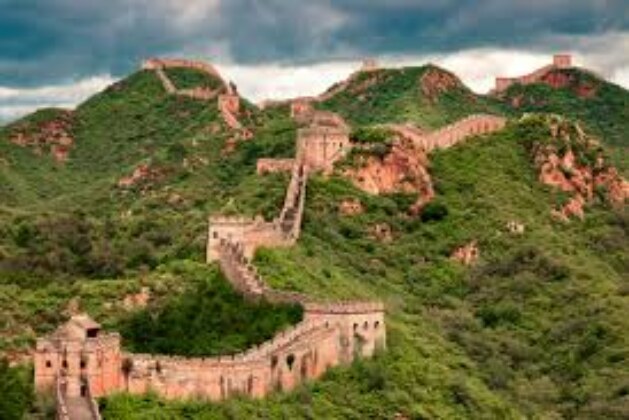The Great Wall of China stretches over 13,000 miles and stands as one of the most impressive architectural achievements in human history. Built over centuries using primitive tools and sheer determination, it continues to amaze engineers and historians alike. But how did ancient Chinese builders construct such a massive structure without cranes, bulldozers, or steel? Let’s uncover the remarkable story of the Great Wall’s construction and the ingenuity behind it.
Table of Contents
Introduction
Long before skyscrapers touched the clouds and machines dominated construction sites, ancient civilizations relied on manual labor, clever engineering, and raw materials from their surroundings. Among the greatest accomplishments from this era is the Great Wall of China—a colossal structure that snakes across deserts, mountains, valleys, and plateaus. Built to protect China from invasions and raids, the Wall is not only a defensive fortification but a symbol of human endurance and strategic brilliance.
This article delves into how the Great Wall of China was built without modern tools, exploring the methods, materials, labor forces, and architectural innovations that made it possible.
1. When and Why Was the Great Wall Built?
The origins of the Great Wall trace back to the 7th century BCE, with various states building fortifications to protect their territories. It wasn’t until the Qin Dynasty (221–206 BCE) that the walls were unified under Emperor Qin Shi Huang. Later, during the Ming Dynasty (1368–1644), the Wall was extensively rebuilt and fortified into the form we mostly see today.
The main purpose was to defend the Chinese states from northern nomadic tribes like the Xiongnu and later, the Mongols. It also served as a border control system, regulating trade and immigration along the Silk Road.
2. Building Without Modern Machinery: Tools and Labor
Despite the lack of cranes or advanced tools, the ancient Chinese developed ingenious ways to construct the Wall:
Manual Tools Used:
- Wooden and bronze shovels
- Baskets for carrying earth
- Hammers and chisels
- Ropes, pulleys, and levers
- Wheelbarrows (invented in China)
These simple tools were used in large numbers by hundreds of thousands of laborers working in extreme conditions.
The Workforce
The labor force consisted of:
- Soldiers
- Peasants
- Convicts
- Forced laborers (including prisoners)
Estimates suggest over a million people worked on the Wall, many of whom died due to harsh working conditions—earning it the grim nickname “the longest cemetery on Earth.”
3. Local Materials: The Secret to Construction
One of the Wall’s remarkable features is how builders used locally available materials along different sections of the Wall:
- Tamped Earth: In early versions (especially in the western desert areas), layers of earth were compacted between wooden boards.
- Wood and Reed Mats: Used as reinforcement in marshy or less stable regions.
- Bricks and Stone: During the Ming Dynasty, bricks were widely used. Workers fired bricks in kilns nearby and transported them via human chains or animal carts.
- Limestone and Granite: In mountainous areas, stones were quarried nearby and shaped manually.
By adapting to the geography and sourcing materials locally, they saved time, effort, and transportation costs.
4. Engineering Techniques Without Modern Aid
Despite the simplicity of tools, the Wall incorporated advanced engineering techniques:
Tamping Method:
Layers of soil were placed between wooden frames and compacted with hand-held tools. Each layer was pressed down until it was rock-hard.
Brickwork and Mortar:
Bricks were laid with a special mortar made from lime and sticky rice, a mixture that provided amazing durability and weather resistance.
Watchtowers and Beacon Towers:
Placed at regular intervals, these served both defensive and communication purposes. Soldiers used smoke signals by day and fire signals at night to warn of approaching invaders.
Drainage Systems:
Engineers built hidden drainage channels and water exits into the Wall’s foundation to prevent erosion and water damage.
5. Challenges Faced by the Builders
- Harsh Terrain: Workers had to build across mountains, rivers, and deserts without machines.
- Logistical Problems: Supplying food, water, and materials to remote locations was difficult.
- Extreme Weather: From freezing temperatures to scorching heat, builders worked year-round.
- Loss of Life: Many died due to exhaustion, disease, and accidents, and were buried near the Wall.
6. Legacy and Significance Today
Today, the Great Wall stands not just as a tourist attraction, but as a testament to what human beings can accomplish with vision, perseverance, and resourcefulness. It’s been recognized as a UNESCO World Heritage Site and remains a powerful symbol of China’s historical resilience and architectural genius.
Conclusion
The Great Wall of China wasn’t built in a day—nor was it built with machines. It was the result of human labor, smart engineering, and adaptive construction methods that spanned over two thousand years. Understanding how such a massive structure came into existence without modern technology reveals not only the ingenuity of ancient civilizations but also their sheer will to protect and unify a nation.
This enduring marvel reminds us that great feats don’t always require high-tech tools—sometimes, they require nothing more than human determination and ingenuity.
Read More: Bermuda Triangle: Famous Disappearances Explained — Fact or Fiction?




